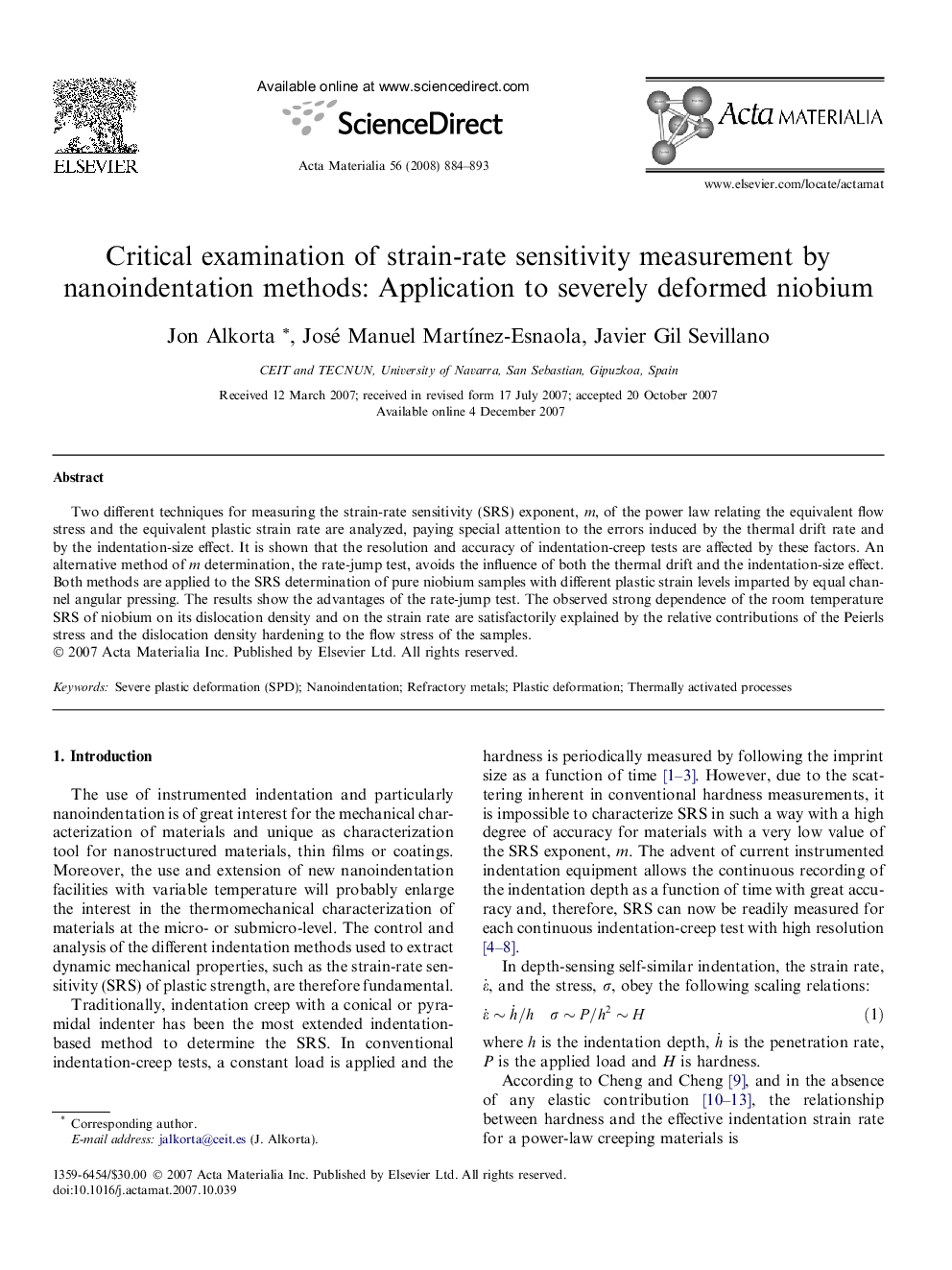| Article ID | Journal | Published Year | Pages | File Type |
|---|---|---|---|---|
| 1449327 | Acta Materialia | 2008 | 10 Pages |
Two different techniques for measuring the strain-rate sensitivity (SRS) exponent, m, of the power law relating the equivalent flow stress and the equivalent plastic strain rate are analyzed, paying special attention to the errors induced by the thermal drift rate and by the indentation-size effect. It is shown that the resolution and accuracy of indentation-creep tests are affected by these factors. An alternative method of m determination, the rate-jump test, avoids the influence of both the thermal drift and the indentation-size effect. Both methods are applied to the SRS determination of pure niobium samples with different plastic strain levels imparted by equal channel angular pressing. The results show the advantages of the rate-jump test. The observed strong dependence of the room temperature SRS of niobium on its dislocation density and on the strain rate are satisfactorily explained by the relative contributions of the Peierls stress and the dislocation density hardening to the flow stress of the samples.
